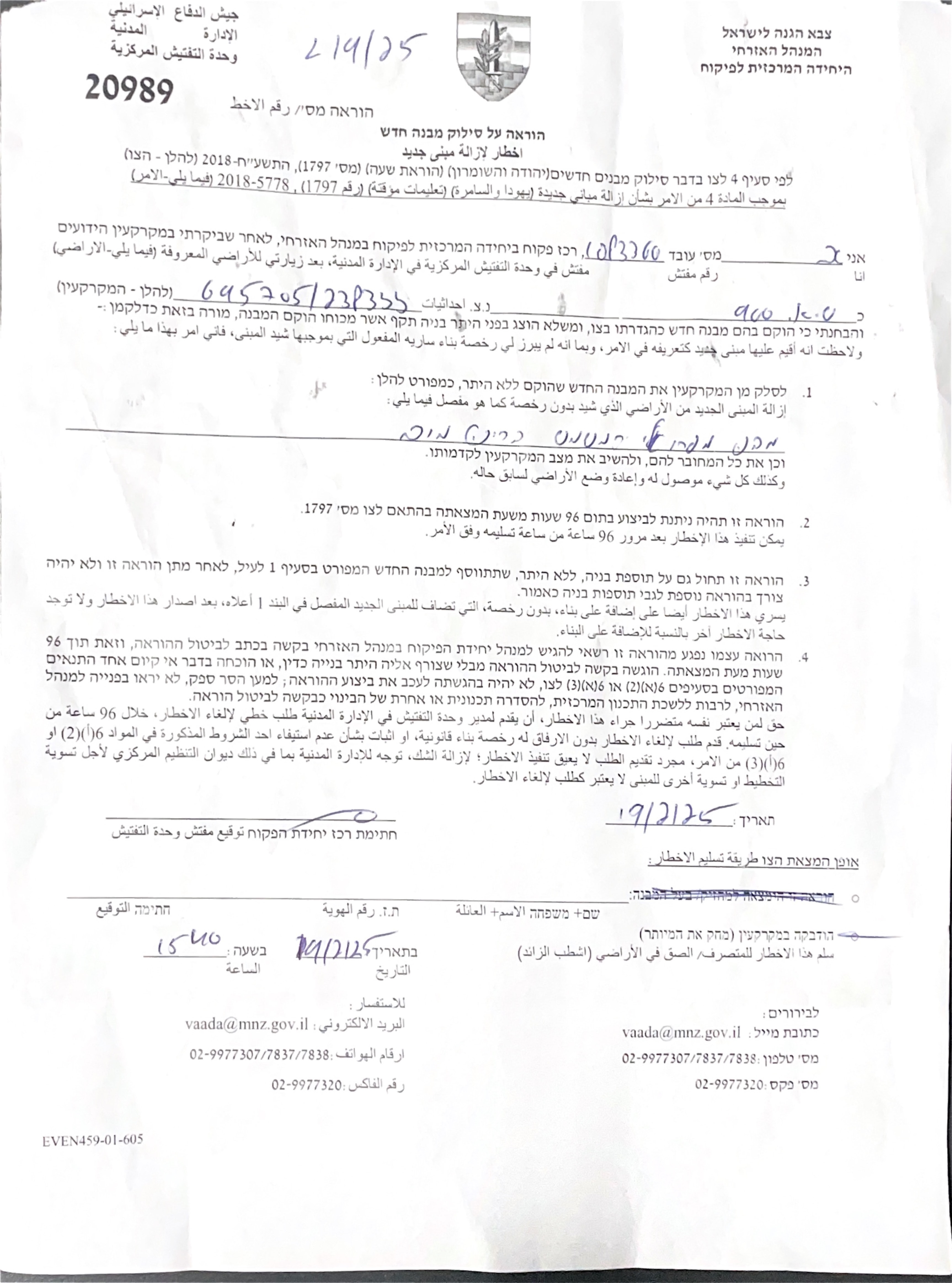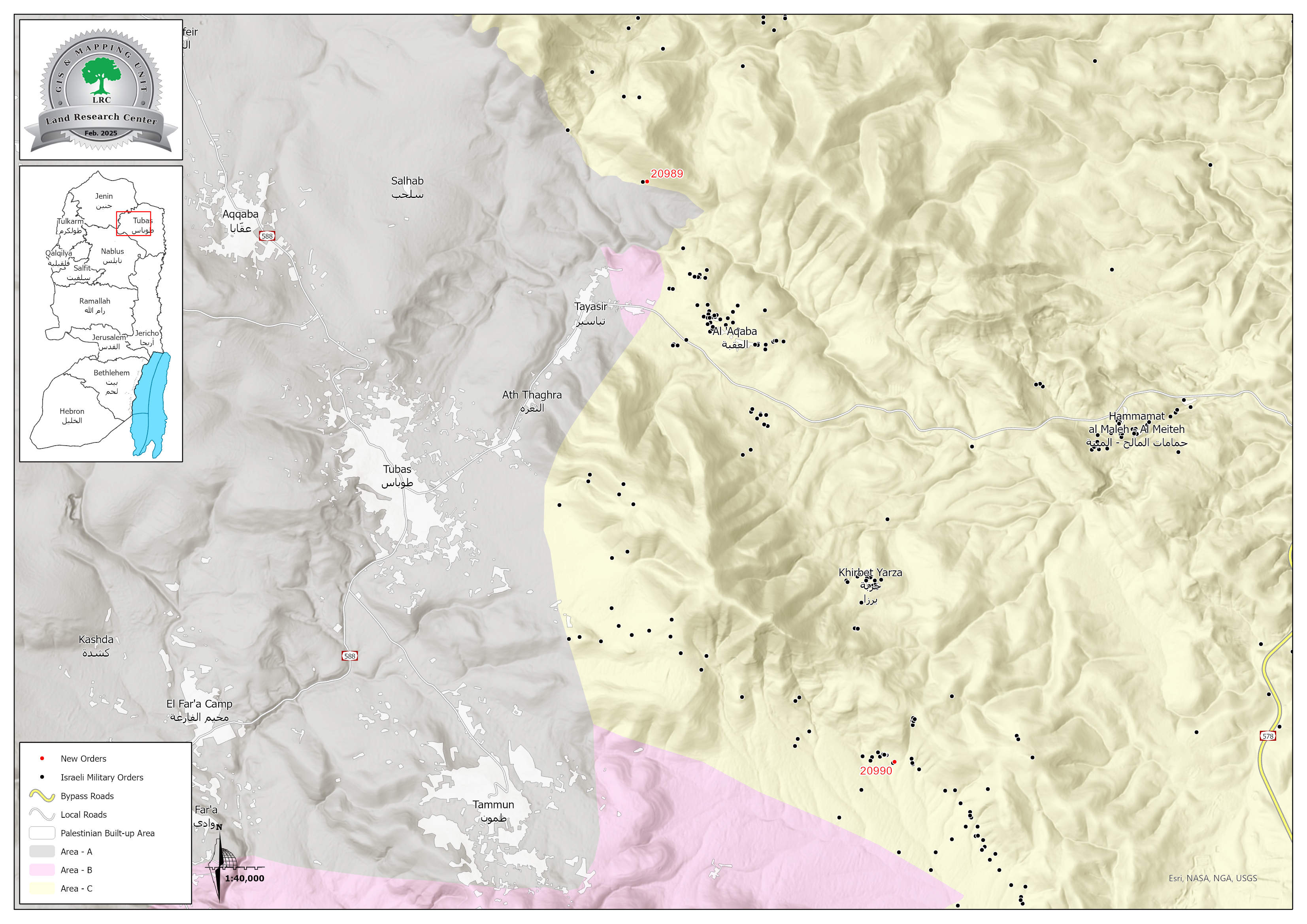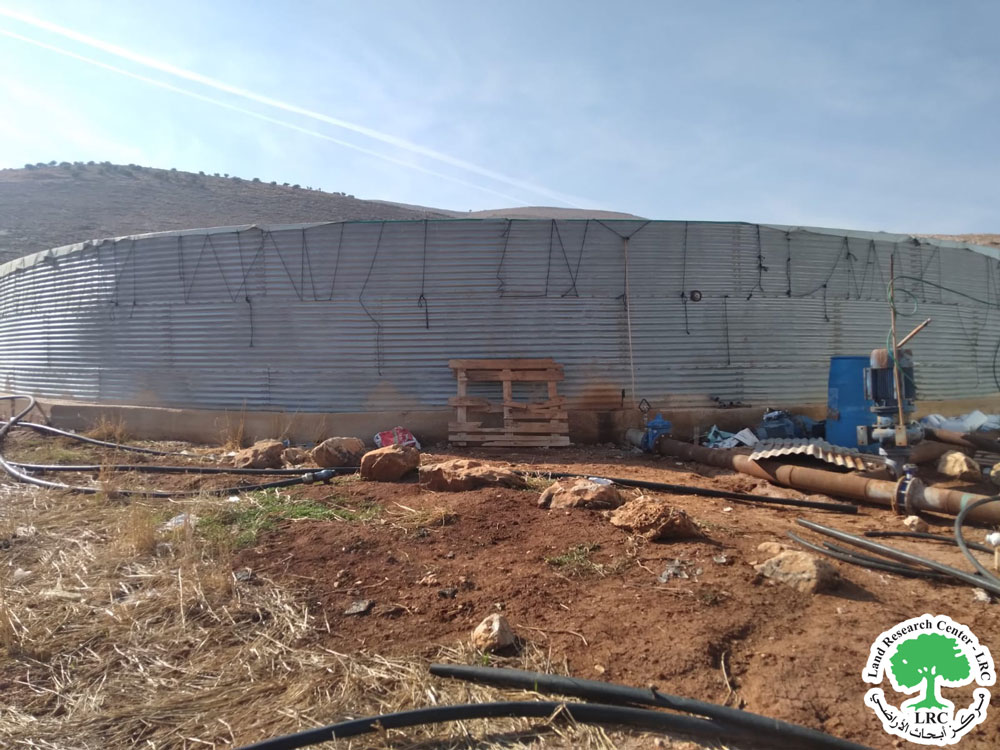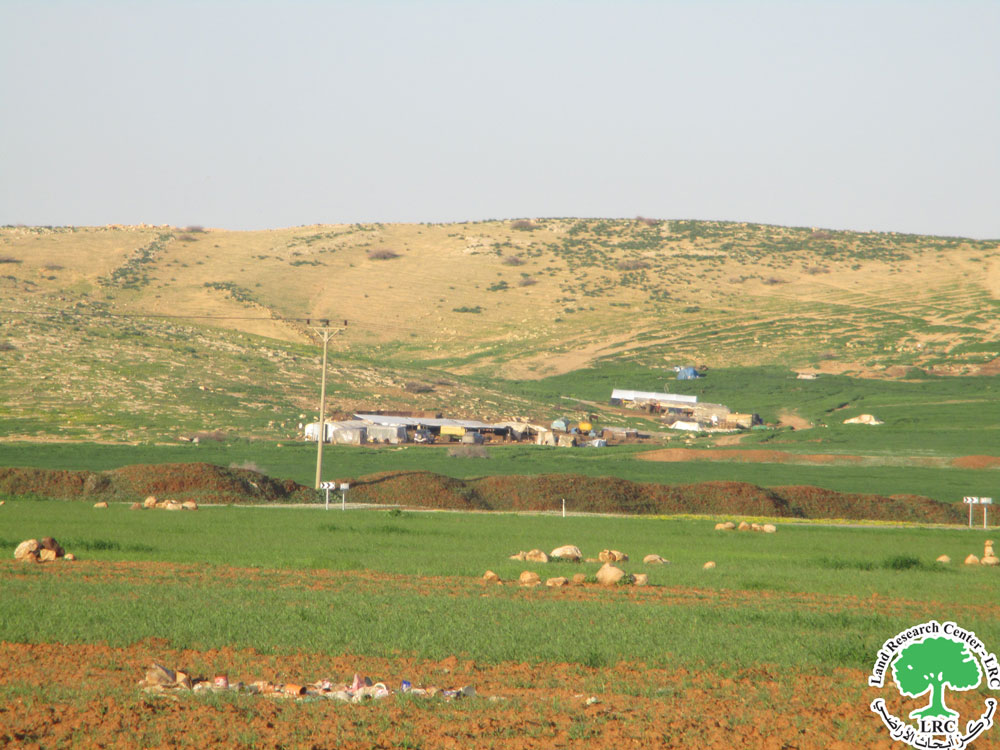Demolition and Removal Notice for an Agricultural Facility and a Rainwater Collection Well within 96 Hours in Al- Ras Al- Ahmar and Tayaseer / Tubas Governorate
Violation: Notices of Demolitions and Removal within 96 Hours.
Location: The Northern Jordan Vally in Nablus Governorate.
Date: February, 19th 2025
Perpetrator: The building inspector at the Israeli civil administration.
Affected Party: A Number of Farmers.
Description:
On Wednesday morning, 19/2/2025. The Palestinian Jordan valley area witnessed a new assault by the so-called building and planning inspector of the civil administration.
On the morning of that day, the Israeli occupation targeted Al- Ras Al- Ahmar area east of the village of Atuf, and a number of residential and agricultural tents were targeted with a notice that included immediate evacuation within 96 hours, as those facilities are owned by the farmer Fa’eq Abdullah Hassan Bishraat.
The occupation targeted a rainwater collection with a capacity of 500 m3 in Al Tayaseer area, which has been implemented through Palestinian Hydrology group to a group of farmers there, and that used to provides irrigation water nearly about 45 dunams from lands that planted with different crops, where the well is targeted by 96 hours demolition notice based on the notification that came under the title of removing a new building.
The following table shows the details of the damages:
The Affected Farmer | A Number of Family members | Number of Females | Number of children | Number of Notification | Description of the notified facility | Image |
A number of Farmers represented by Raed Hamdan Ghori Daraghmeh | 6 | 3 | 0 | 20998 | Metal pond for collecting water | 1 |
Fa’eq Abdullah Hassan Bishraat | 8 | 3 | 2 | 20990 | Sheep tent 60 m2 Sheep tent 90 m2 Tent accommodation 90 m2 Sheep pen 110m2 | 2 |
Total | 14 | 6 | 2 |
|
|
|
 |  |
The farmer Raed Hamdan Daraghmeh said to a researcher at Land Research Center:
‘’The targeted water reservoir in a source of irrigation for 45 dunams of open field vegetables and 7 dunams of greenhouse crops, the reservoir project was recently, sat up through a Palestinian hydrology group project and it serves at least 9 agricultural families by providing irrigation water for their owned agricultural lands. The cost of buying water is extremely high (3 shekels per cubic meter). This reservoir is a hope for residents of the Jordan valley and Tayaseer, and it is the main reason for encouraging agricultural work in light of the water scarcity in the Jordan valley.’’
The Israeli occupation uses such types of notification, which include demolition orders within 96 hours, to prevent construction in Area C and speed up the demolition process in the Jordan Valley. The field researcher observed a large number of structures targeted by this type of notification , in which is common and essential method for limiting construction, it also contributes to preventing any affected farmer from submitting a permit application, and speeding up the demolition process and displacing citizens.
Legal Commentary :
The actions carried out by the Israeli occupation authorities in demolishing Palestinian homes and structures constitute violations of international and humanitarian law, as well as a breach of the right to adequate housing, a right guaranteed by international law and treaties. This is evident in the following articles:
Article 147 of the Fourth Geneva Convention states: "Extensive destruction and appropriation of property not justified by military necessity and carried out unlawfully and wantonly is considered a grave breach of the Convention."
Article 53 of the Fourth Geneva Convention of 1948 prohibits the destruction of property, stating: "The occupying power may not destroy private property, whether movable or immovable, belonging to individuals or groups, or to the State or public authorities, or to social or cooperative organizations, unless such destruction is imperatively demanded by military operations."
Article 33 of the Fourth Geneva Convention stipulates: "No protected person may be punished for an offense he or she has not personally committed."
Paragraph 'j' of Article 23 of the Hague Convention of 1907 warns against the destruction of "enemy property or its sequestration, unless such destruction or sequestration is imperatively demanded by the necessities of war."
Article 17 of the Universal Declaration of Human Rights, dated December 10, 1948, states: "No one shall be arbitrarily deprived of his property."
These legal provisions highlight the illegality of such actions and reinforce the protection of Palestinian rights to property and housing under international law.
[1] Source: LRC – GIS.
- مشروع: حماية الحقوق البيئية الفلسطينية في مناطق "ج" SPERAC IV - GFFO
Disclaimer: The views and opinions expressed in this report are those of Land Research Center and do not necessarily reflect the views or positions of the project donor; the Norwegian Refugee Council.
إخلاء المسؤولية: الآراء ووجهات النظر الواردة في هذا التقرير هي آراء ووجهات نظر مركز أبحاث الأراضي ولا تعكس بالضرورة وجهات نظر أو مواقف الجهة المانحة للمشروع؛ المجلس النرويجي. للاجئين



